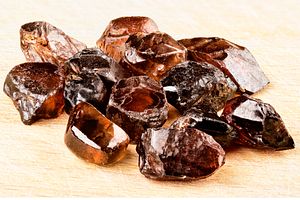Scientists have confirmed that a microscopic crystal found in Australia is the oldest known piece of the Earth’s crust. Using advanced dating techniques, they determined that the tiny fragment of zircon is 4.4 billion years old.
Researchers from the University of Wisconsin published their findings in the journal Nature Geoscience earlier this week.
The zircon, found on a sheep ranch in the Jack Hills region of Western Australia, indicates that our planet’s crust hardened much more rapidly than originally thought – 100 million years after the Earth itself was born and just 160 million years after the formation of the solar system. This supports the so-called “cool early Earth” theory that was hypothesized in 2002.
“[The zircon] proves that Earth remained a fiery ball covered in a magma ocean for a shorter period of time after its creation than previously thought,” said AFP. “The Earth is thought to have formed about 4.5 billion years ago, but little is known about its early years, particularly when it became cool enough for the crust to congeal from a sea of molten rock and for liquid water to form. Some had postulated the cooling would have required as much as 600 million years.”
Zircon, a common mineral found in igneous, metamorphic and sedimentary rocks, occurs in many colors – including red, yellow, blue and green. Colorless zircon specimens are a popular substitute for diamond. Though large zircon crystals are rare, they can grow to be several centimeters in length.
The pieces found in Australia measure only 200 by 400 microns – twice the diameter of a human hair.
“Zircons can be large and very pretty, but the ones we work on are small and not especially attractive except to a geologist,” John Valley, the study’s lead author, told The Sydney Morning Herald. “If you held it in the palm of your hand, if you have good eyesight you could see it without a magnifying glass.”
To determine the zircon’s age, Valley’s team applied two atomic dating techniques. First, they had to expose radioactive lead atoms within the crystals. The lead atoms, which actually started as uranium but decayed into lead over time, were trapped inside the crystals during the Earth’s solidification process.
The final step was examining the lead atoms for signs of altered radioactivity, using a technique called atom-probe tomography. This process acted as a fail-safe, allowing researchers to confirm that the zircon was 4.374 billion years old (with a margin of error of plus or minus 6 million years).
Valley’s paper may also suggest that water was present in the liquid magma ocean where the zircon crystals were likely created.
“We’ll never know how much water there really was, but the simplest interpretation of those zircons coming from granitic rocks, is that we had a hydrous planet right from the very beginning,” said Professor Samuel Bowring of the Massachusetts Institute of Technology, who wrote an accompanying analysis of Valley’s research. “The water was probably accreted with the rest of the parts of the Earth as the planet formed.”
Though the oldest existing fossils of microorganisms known as stromatolites are roughly 3.4 billion years old, Valley said that the Earth may have been able to sustain microbial life much earlier.
“We have no evidence that life existed then – we have no evidence that it didn’t,” he added. “There is no reason why life could not have existed on Earth 4.3 billion years ago.”

































